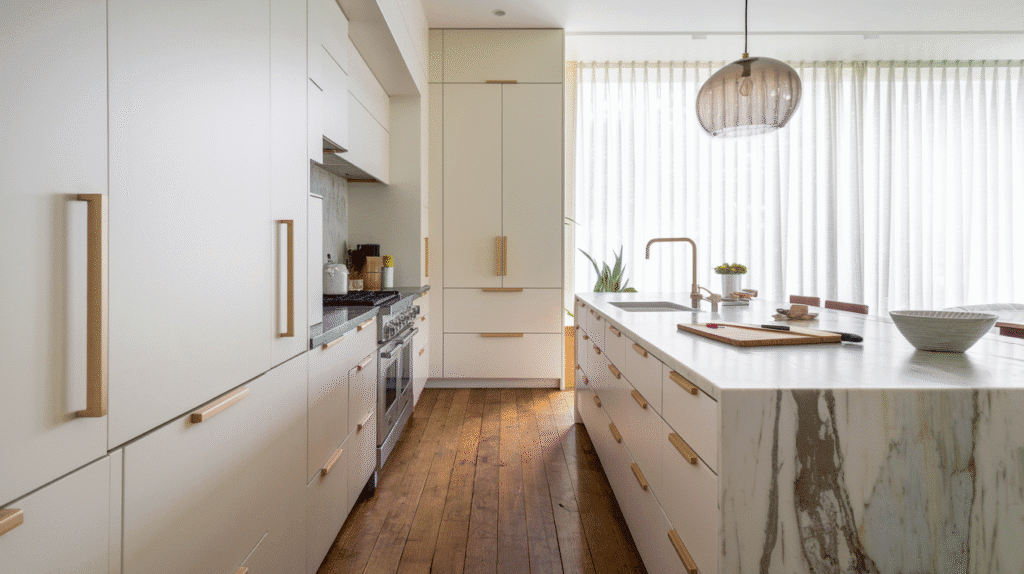Kitchen Island Modeling in Revit: Advanced Design Techniques
No products found.
Architectural designers and BIM professionals constantly seek innovative ways to elevate their kitchen design workflows in Revit. Mastering advanced kitchen island modeling techniques can transform how architects and interior designers approach spatial planning and detailed representations.
Strategic Parametric Modeling Approaches
When developing kitchen island revit, parametric flexibility becomes crucial. By creating intelligent family parameters, designers can generate dynamic islands that adapt seamlessly to various kitchen configurations. This approach allows for rapid iterations and precise dimensional adjustments without compromising structural integrity.
Key Parametric Considerations
- Configurable width and depth measurements
- Adaptive material assignments
- Integrated countertop thickness variations
- Modular component integration
Advanced Geometry Manipulation Techniques
Professional Revit users understand that sophisticated kitchen island models require nuanced geometric manipulation. Utilizing complex geometry tools enables designers to create intricate island shapes beyond standard rectangular configurations. Leveraging reference planes, blending techniques, and void cuts allows for unprecedented design complexity.
Geometric Transformation Strategies
- Create reference geometry
- Implement precise void cuts
- Develop nested component families
- Establish adaptive point constraints
Material and Finish Rendering Optimization
Sophisticated kitchen island modeling transcends basic geometric representation. By implementing high-quality material mappings and realistic finish textures, designers can generate photorealistic visualizations directly within the Revit environment. Utilizing advanced graphical settings ensures exceptional visual fidelity and accurate material representation.
| Material Category | Recommended Rendering Approach |
|---|---|
| Granite Countertops | High-resolution procedural texture mapping |
| Wooden Cabinetry | Detailed grain pattern implementation |
| Metal Hardware | Reflectivity and specular highlight optimization |
Performance and Efficiency Considerations
While creating complex kitchen island models, maintaining file performance remains paramount. Implementing lightweight family strategies and judicious geometry management ensures smooth computational performance. Experienced Revit users recommend breaking complex islands into manageable nested components to optimize system resources.
Performance Optimization Techniques
- Minimize unnecessary geometric complexity
- Use lightweight family loading strategies
- Implement shared parameters efficiently
- Leverage temporary hide/isolate functionalities
Collaborative Design Integration
Modern architectural workflows demand seamless interdisciplinary collaboration. By developing intelligent kitchen island families with robust parameter frameworks, designers can facilitate smoother communication between architectural, interior design, and engineering teams. Establishing clear design intent through parametric modeling reduces potential miscommunication and streamlines project development.
Architects and designers who master these advanced Revit kitchen island modeling techniques can significantly elevate their design capabilities. By combining technical precision with creative flexibility, professionals can transform traditional kitchen design approaches and deliver exceptional spatial solutions.
Performance Optimization Strategies for Kitchen Island Components in Architectural Visualization
Architects and designers seeking to enhance their Revit workflow can significantly improve rendering performance by implementing strategic optimizations for kitchen island components. By focusing on specific techniques, professionals can streamline their architectural visualization processes and reduce computational overhead.
Efficient Geometric Modeling Techniques
When developing kitchen island models in Revit, simplifying geometric complexity becomes crucial. Designers should prioritize creating lightweight component families with minimal unnecessary details. By reducing polygon count and eliminating redundant geometry, users can achieve faster loading times and smoother navigation within their architectural models.
Key Optimization Strategies
- Utilize simplified geometric primitives
- Minimize surface subdivisions
- Implement parametric constraints efficiently
- Avoid excessive nested components
Material and Texture Management
Material assignments play a critical role in rendering performance. Selecting optimized texture resolutions and using procedural materials can dramatically reduce computational demands. Professionals should consider implementing lower-resolution textures for less prominent kitchen island surfaces while maintaining high-quality rendering for focal points.
Texture Optimization Recommendations
| Surface Type | Recommended Resolution | Performance Impact |
|---|---|---|
| Countertop | 2048×2048 pixels | Moderate |
| Cabinet Panels | 1024×1024 pixels | Low |
| Hardware Details | 512×512 pixels | Minimal |
Parametric Family Optimization
Creating intelligent, lightweight kitchen island families requires strategic parameter management. Designers should focus on developing flexible components that balance visual fidelity with computational efficiency. Implementing adaptive components and using shared parameters can help reduce model complexity while maintaining design adaptability.
Performance-Driven Family Creation Techniques
- Limit nested family instances
- Use type catalogs for material variations
- Implement calculated parameters sparingly
- Utilize instance visibility controls
Rendering and View Performance Considerations
Advanced visualization workflows demand sophisticated performance optimization strategies. Leveraging Revit’s built-in view settings and graphics settings can significantly enhance rendering capabilities. Professionals should experiment with level of detail controls and graphic overrides to balance visual quality and computational resources.
Rendering Optimization Checklist
- Configure graphic display options
- Utilize temporary hide/isolate functions
- Manage view range parameters
- Optimize view templates
Hardware and Software Configuration
Beyond modeling techniques, hardware configuration significantly impacts Revit performance. Users should ensure their workstations feature robust computational resources, including high-performance GPUs, sufficient RAM, and fast storage solutions. Professional-grade graphics cards with dedicated VRAM can substantially improve kitchen island rendering and manipulation speeds.
By implementing these comprehensive optimization strategies, architects and designers can create more efficient, responsive, and visually compelling kitchen island models within the Revit environment. Continuous refinement and strategic approach to component design will ultimately lead to superior architectural visualization outcomes.

Conclusion
Mastering kitchen island design in Revit transforms architectural visualization from mundane to extraordinary. By leveraging advanced modeling techniques and performance optimization strategies, architects and designers can create stunning, highly detailed kitchen environments that push the boundaries of digital representation.
The journey of kitchen island design in Revit is not just about technical proficiency, but about storytelling through spatial configuration. Professionals who invest time in understanding nuanced modeling approaches and computational efficiency will undoubtedly elevate their architectural presentations.
Key takeaways from our exploration reveal that successful kitchen island modeling requires a delicate balance between geometric complexity and system performance. Smart component creation, strategic parametric design, and intelligent rendering techniques enable designers to craft immersive, realistic kitchen spaces without compromising project file responsiveness.
Future-ready architects will continue to refine their Revit skills, recognizing that kitchen islands are more than mere functional elements they’re focal points of spatial narrative. By embracing innovative modeling strategies and optimization techniques, design professionals can consistently deliver compelling, high-fidelity architectural visualizations.
Ultimately, the art of kitchen island design in Revit transcends technical limitations. It represents a sophisticated intersection of creativity, technological prowess, and practical application. As software capabilities evolve, so too will the potential for more intricate, responsive, and visually stunning architectural representations.
Designers who remain adaptable, continuously learn, and experiment with advanced Revit techniques will position themselves at the forefront of architectural visualization, transforming conceptual kitchen spaces into breathtaking digital experiences.
